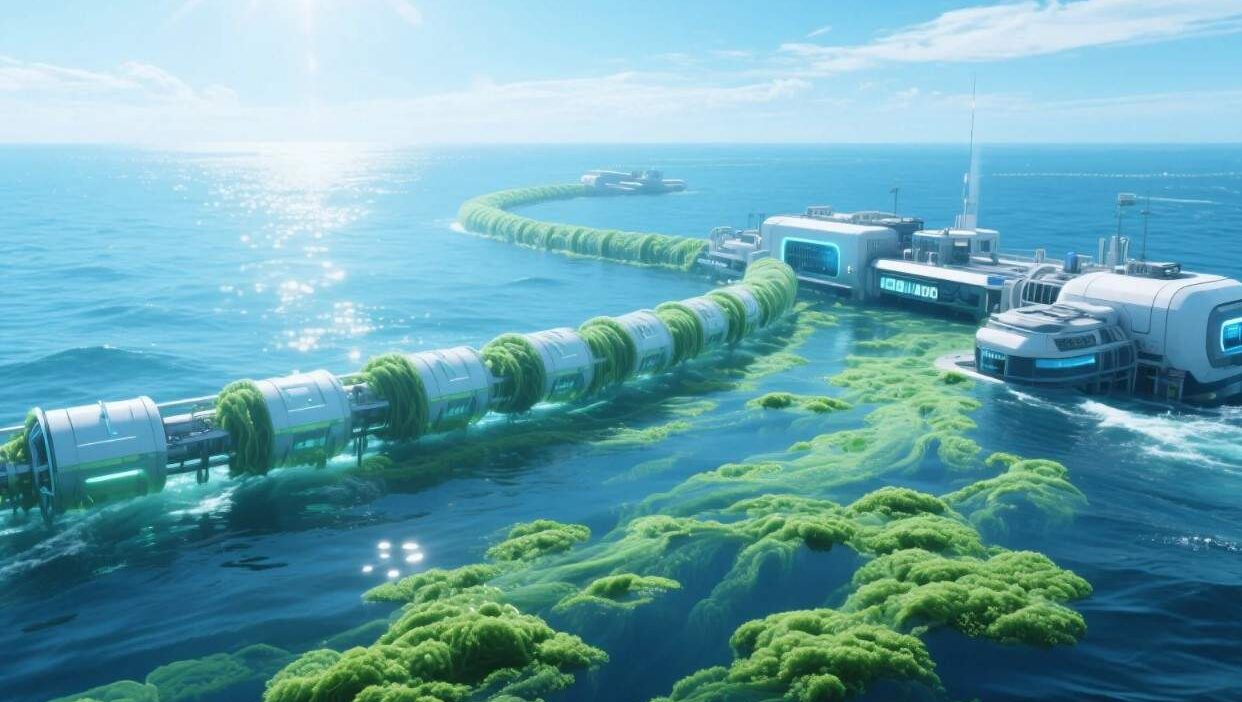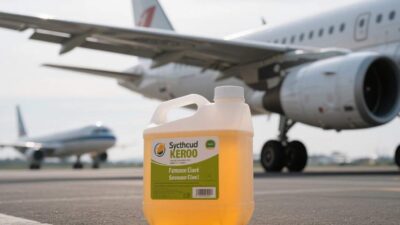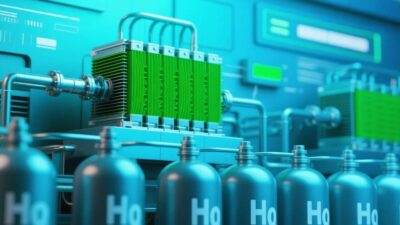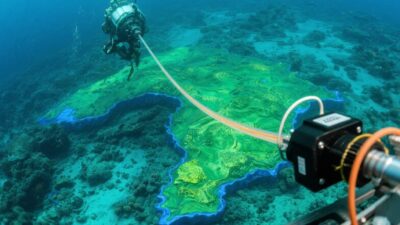From Plastic Soup to Algae Gold – A New Era of Sustainable Ocean Restoration
The Ocean’s Silent Cry for Help
Imagine sailing across the Pacific, where the water should shimmer with life—but instead, you’re surrounded by a sea of plastic. Bottles, bags, and microplastics float like a gray fog, choking marine life and poisoning the food chain. This isn’t a nightmare; it’s the reality of our oceans today. Over 8 million tons of plastic enter the ocean every year, and by 2040, that number could double.
But here’s the twist: The solution might lie in the very waters we’re polluting. Algae—those unassuming, slimy organisms you might have scraped off a rock at the beach—are emerging as unlikely heroes. These microscopic (and sometimes macroscopic) wonders are being engineered to not only clean up plastic but also fuel our ships, power our cities, and heal the ocean. Let’s dive into how algae biofuels are rewriting the rules of ocean cleanup.
Algae – Nature’s Overlooked Cleanup Crew
Algae have been around for 3.5 billion years, outliving dinosaurs and surviving ice ages. But their potential as eco-warriors has only recently been unlocked.
Why Algae? The Ultimate Green Machines
- Rapid Growth: Algae can double in size in 24 hours—faster than any land crop. A single acre of algae farms can produce 10–100 times more oil than soybeans or corn.
- CO2 Sponges: Like trees, algae absorb carbon dioxide as they grow. But unlike forests, they don’t need arable land or freshwater. They thrive in saltwater, polluted water, or even wastewater.
- Plastic-Eating Superpowers: Certain algae species, like Chlorella vulgaris, produce enzymes that break down microplastics into harmless compounds. Imagine a “plastic-eating algae bloom”—it could turn garbage patches into fertile grounds for new life.
From Pond Scum to Biofuel Gold
Algae aren’t just cleaners—they’re fuel factories. When stressed (like when they’re starved of nutrients), many algae species produce oil (lipids) that can be refined into biodiesel, jet fuel, or even hydrogen. Companies like Aurora Algae and Sapphire Energy are already scaling up this process, turning algae into “green crude” that powers cars, planes, and ships.
The Tech That’s Making Algae the Ocean’s Best Friend
So how do we turn pond scum into a global cleanup force? It’s a mix of old-school biology and cutting-edge tech.
1. Algae Farms: Floating Factories in the Ocean
Picture massive floating platforms—like giant rafts—anchored in coastal waters. These farms grow algae in enclosed ponds or photobioreactors (clear tubes bathed in sunlight). The algae feed on nutrients from the ocean (or treated wastewater) and grow at lightning speed. Once harvested, their oil is extracted for biofuel, and their biomass is used to make biodegradable plastics or animal feed.
In Hawaii, a startup called Blue Marble Biomaterials operates a 10-acre algae farm that produces enough oil to power 1,000 homes annually. But the real win? The farm also filters out nitrogen and phosphorus from the water, reducing harmful algal blooms that choke coral reefs.
2. Genetic Engineering: Supercharging Algae
Scientists are tweaking algae DNA to make them even more efficient. For example:
- Lipid-Boosting Strains: By inserting genes from other organisms (like yeast), researchers have created algae that produce 50% more oil than wild strains.
- Plastic-Degrading Enzymes: Algae can be modified to secrete enzymes that break down microplastics into CO₂ and water, which the algae then absorb.
In 2023, a team at MIT engineered a strain of Synechococcus (a cyanobacterium, often called “blue-green algae”) that not only grows on CO₂ but also digests plastic waste. In lab tests, it reduced microplastic concentrations by 80% in just two weeks.
3. Algae-to-Fuel: Closing the Loop
The beauty of algae biofuels is their circularity. The CO₂ released when the fuel is burned is reabsorbed by new algae crops, creating a closed carbon loop. Compare this to fossil fuels, which release new CO₂ trapped underground for millions of years.
Challenges – Can Algae Save the Ocean Without Harming It?
Algae’s potential is huge, but scaling up comes with hurdles.
1. The “Algae Invasion” Risk
Introducing engineered algae into the ocean could backfire. What if a super-efficient strain outcompetes native species, disrupting marine ecosystems? Regulators are already warning against “bioinvasion.” Solutions include:
- Using local algae species modified to avoid spreading.
- Growing algae in closed systems (like offshore farms) instead of open water.
2. Cost and Energy Demands
Growing and processing algae is energy-intensive. Harvesting requires separating tiny cells from water, which uses a lot of electricity. To compete with fossil fuels, algae biofuels need to be cheaper. Startups are tackling this with innovations like:
- AI-Optimized Farms: Machine learning models that adjust light, temperature, and nutrient levels to maximize growth.
- Waste-to-Algae Systems: Using agricultural runoff or sewage as fertilizer, cutting costs and closing nutrient loops.
3. Public Perception: “Slime” vs. Solution
Algae have a PR problem. Most people think of them as pond scum, not climate heroes. Educating the public about their role in cleaning oceans and powering cities is key. As marine biologist Sylvia Earle says, “The ocean is our life support system. We need to treat it like family.”
The Future – When Algae Farms Are as Common as Wind Turbines
Imagine a world where every coastal city has an algae farm floating offshore. These farms:
- Clean the water by absorbing plastic and excess nutrients.
- Produce biofuels that power ships, planes, and trucks.
- Create jobs for local communities, from farm technicians to biofuel engineers.
In Norway, a pilot project called AlgaeMar is testing this vision. Off the coast of Bergen, a 50-acre algae farm is already producing biodiesel for local ferries. The farm’s operators claim it removes 10 tons of plastic waste monthly—equivalent to 500,000 plastic bottles.
Closer to home, California’s Blue Rock Biofuels plans to build a 1,000-acre algae farm in the San Francisco Bay. The project aims to reduce plastic pollution in the bay by 30% while supplying 10% of the state’s aviation fuel by 2030.
What You Can Do – Be Part of the Algae Revolution
You don’t need a lab coat to help. Here’s how you can support algae-powered ocean cleanup:
- Reduce Plastic Use: Every plastic bottle you avoid is one less for algae to clean up.
- Advocate for Innovation: Support policies that fund algae research (e.g., tax breaks for sustainable biofuel startups).
- Spread the Word: Share stories about algae’s potential—most people don’t know these tiny organisms could save our oceans.
Algae: Nature’s Answer to Our Ocean’s Prayers
The ocean’s crisis is human-made, but nature has provided a solution in algae. These unassuming organisms are more than just “pond scum”—they’re biofactories, carbon sinks, and plastic eaters. By harnessing their power with smart tech and ethical practices, we can turn the tide on ocean pollution.
As we look to the future, let’s remember: The ocean doesn’t need us to save it—it needs us to listen. And right now, it’s whispering through the algae: Grow. Clean. Heal.



